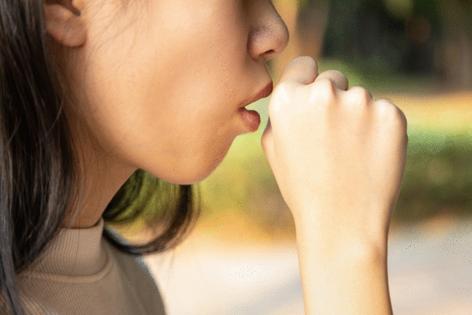Florida has seen a rise in tuberculosis cases. What too know about avoiding infection
Published in News & Features
MIAMI — A Broward County high school has confirmed an active case of tuberculosis, one of the deadliest, but treatable, infectious diseases in the world.
The bacterial infection, also known as TB, spreads when people breathe in the germs of an infected person. The disease usually infects the lungs, although it can also affect the brain, kidney and other parts of the body.
Thousands are diagnosed with TB annually in the U.S., which until a few years ago had seen a steady decline in cases and is considered to have some of the lowest rates of TB infections in the world, according to the federal U.S. Centers for Disease Control and Prevention.
More TB cases have been recorded in Florida and other parts of the U.S. since 2021, the year after COVID struck, though the federal agency still considers the country to have a low infection risk.
Recent federal data shows that Florida recorded more than 600 cases of TB in 2024, making it the state with the fourth-highest number of reported cases.
While antibiotics can help treat and cure the infection, if left untreated, TB can lead to severe infection, and even death.
Here’s what else to know:
What’s the difference between inactive and active TB?
Tuberculosis can be a difficult disease to monitor for as some people might be sick and not know it due to lack of symptoms.
The CDC estimates that up to 13 million people in the U.S are living with “latent TB,” also known as “inactive TB.” This means the bacteria is dormant and is not causing the person to be sick, according to Dr. Paula Eckardt, chief of infectious diseases at Memorial Healthcare System, one of Broward’s two public hospital systems. A person with inactive TB is not considered to be contagious, she said.
Other people may have “active TB.” This means the person is considered to be contagious and is likely experiencing a range of symptoms, including a long-lasting cough and coughing blood, Eckardt said.
Sometimes, the bacteria will be dormant inside a person’s body for years. Then one day, the bacteria wakes up and makes the person sick. This usually happens when a person’s immune system weakens, often due to certain health conditions or treatments, including cancer, HIV and organ transplantation, Eckardt said.
“Without treatment, 1 in 10 people with inactive TB will get sick with active TB disease,” according to the CDC. Anyone confirmed to have inactive or active TB should undergo treatment to cure the infection.
“You can treat it,” but “it’s not easy to treat,” Eckardt said. “You have to take a bunch of pills a day, but it’s treatable.”
How does it spread?
Tuberculosis is caused by a germ known as Mycobacterium tuberculosis.
TB can be contagious if the disease is affecting a person’s lungs or throat, but not if it’s affecting a person’s kidney, spine, brain or other body parts, according to the CDC.
The way the disease spreads sounds similar to COVID, the flu and other colds: By inhaling respiratory droplets released into the air when an infected person coughs, speaks or sings, according to the CDC. However, you generally need to be in close contact with the infected person for several hours to be at risk of infection.
This means you won’t get TB by passing someone sick with the disease at the grocery store or in a hallway, Eckardt said.
Who is most at risk?
While anyone can get a TB infection, some people are more at risk, according to the CDC and Eckardt.
Some of the higher at risk groups include:
—People born in countries or who frequently travel to countries where the disease is common, including in Asia, Africa and Latin America, according to the CDC
—Anyone who has a weaker immune system due to an existing medical condition or treatment, including diabetes, cancer, chronic lung disease, and HIV.
—Anyone who works at hospitals, homeless shelters, prisons, jails and nursing homes are also at higher risk of infection. The CDC says infections are more likely to spread in indoor areas or places with poor air circulation.
—Anyone who is spending long periods of time in an enclosed space, such as a car, a classroom, an office space, or at home, with a person infected with active TB is also at higher risk of infection, said the Broward doctor.
How many TB cases in Florida and the U.S.?
There were 10,347 TB cases reported in the U.S. in 2024, or 3 cases per 100,000 people, according to preliminary CDC data. That’s about 8% more cases than in 2023, when cases rose to above pre-pandemic levels.
The CDC contributes the end to the U.S. nearly three decades of declining TB infections to be related to “recovery from pandemic-related health care disruptions, increases in post-pandemic travel and migration, and outbreaks in several states.” Most of the country’s cases involve people who were not born in the U.S.
Florida recorded 681 cases of TB in 2024, about 9% more than the previous year, federal data shows. California had the highest number of reported TB cases in 2024, with 2,100 cases. More than 30 other states have also seen an increase in TB cases. While most people recover, some still die from disease complications in the U.S
Most common TB symptoms
Some common tuberculosis symptoms are similar to other infections, including fatigue, chills and fever.
Other symptoms to watch out for, especially if you were possibly exposed to someone with TB include:
—A cough that lasts at least three weeks
—Chest pain
—Coughing up blood or sputum (plhegm from deep inside the lungs)
—Night sweats, weight loss and loss of appetite.
Anyone who is exposed to someone with active TB or is experiencing possible TB symptoms should call their doctor for guidance.
Is there a tuberculosis vaccine?
While a vaccine does exist to help reduce the risk of severe TB infection, the shot is not usually given to people in the U.S. because of the country’s low infection risk, according to the CDC.
The federal agency also noted that the shot’s “variable effectiveness against adult pulmonary TB” and the “vaccine’s potential to cause a false-positive TB skin test reaction” are other reasons why the U.S. doesn’t generally use the shot.
However, it’s possible some in South Florida are vaccinated against the disease. While the shot isn’t common in the U.S., many people born in other countries are often vaccinated as children against tuberculosis to reduce the risk of severe infection.
The tubercolosis shot is known as the Bacille Calmette-Guérin, or BCG, vaccine.
How is tuberculosis diagnosed and treated?
Doctors will usually order a blood or skin test to check for TB in people who were exposed to someone infected with active TB or are suspected of being sick with the disease. Doctors may also order a TB test ahead of cancer and other medical treatment for at risk people.
Anyone vaccinated with the TB shot should undergo a blood test, not a skin test, when being checked for TB, according to the CDC. This is because the vaccine is known to sometimes cause a false-positive with the skin test.
Once a doctor determines that you have inactive or active TB, medication will be prescribed to get rid of the infection. This can be a lengthy process involving several months of treatment, according to the Cleveland Clinic. A person usually stops being contagious after several weeks of treatment, according to Eckardt, the Memorial doctor.
_________
©2025 Miami Herald. Visit miamiherald.com. Distributed by Tribune Content Agency, LLC.







Comments